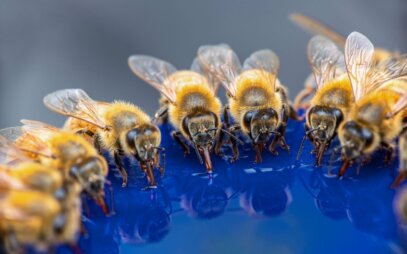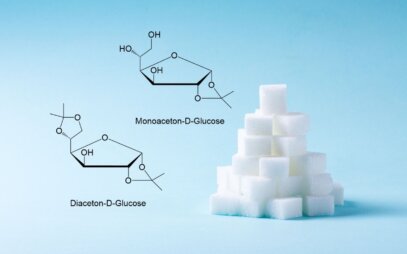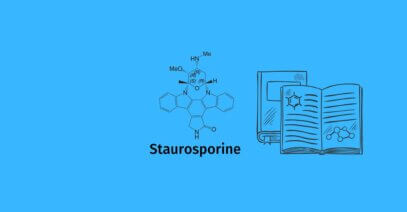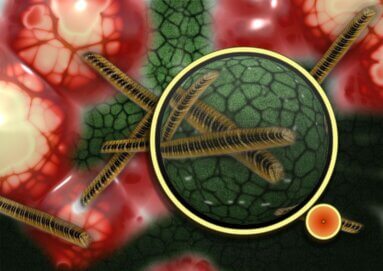Active ingredient of the month April: Bisacodyl
Our active ingredient of the month, Bisacodyl, belongs to the group of laxatives. In the form of enteric-coated tablets or suppositories, it is usually used for a short time for constipation – since the 1950s. Special feature: dual mechanism of action Bisacodyl offers a dual mechanism of action: on the one hand, it stimulates the […]
Read moreFrom scouting to project management: We support your innovation process
Scarcity of raw materials, legal requirements, patent expirations, increasing competition, global pressure. These are challenges that almost every industry faces. In particular, the pharmaceutical and chemical industries. This is aggravated by pronounced regulatory requirements. Pharmaceutical industry: Expenditure on research and development particularly high Regulations and safety standards are constantly changing. Pharmaceutical and chemical companies must […]
Read moreActive ingredient of the month March: Sodium hyaluronate
Sodium hyaluronate or hyaluronic acid is an endogenous substance that is mainly found in joints and connective tissue. Together with water, hyaluronic acid forms a viscous gel, making it the ideal lubricant in the body. Astonishingly, one gram of hyaluronic acid is able to bind up to six liters of water. This extraordinary storage capacity […]
Read moreActive ingredient of the month February: Bee venom
For centuries, traditional medicine has used honeybee venom for its anti-inflammatory effects. Of central importance is the main ingredient melittin. Melittin: A hundred times stronger than cortisone The melittin from the venom of the honey bee has long been known for its strong effect in laboratory experiments. In case of inflammation, it has a hundred […]
Read moreGlycoalkaloids: Potatoes and tomatoes as potential drug suppliers against cancer
The solanine contained in potatoes is one of the glycoalkaloids (naturally occurring phytochemicals). Nightshade plants produce these substances to ward off pests and pathogens. The bioactive compounds can also be toxic to humans. However, researchers have now found that in therapeutic doses, they cause cancer cells to die and suppress the formation of metastases. According […]
Read moreActive ingredient of the month January: Sirolimus
Sirolimus, also known as rapamycin, is an immunosuppressant and mTOR inhibitor with a macrolide structure. It is a product of the streptomycete Streptomyces hygroscopicus. This species of bacteria was first isolated from the soil of the island of Rapa Nui. Active ingredient from Easter Island avoids restenosis in stents Sirolimus is indicated for: Prophylaxis of […]
Read moremTOR inhibitor rapamycin (sirolimus) as a treatment option for tuberous sclerosis
Tuberous sclerosis is a very complex, incurable genetic disease. Within Germany, around 8,000 people are affected, and one to two million people worldwide. Tuberous sclerosis affects almost all organs. It leads, for example, to benign tumors or malformations in the brain. In addition, renal angiomyolipomas often form. These are also benign tumors of the kidney […]
Read moreSugars: from food industry to drug manufacturing
When it comes to sugar, people first think of its function as an energy supplier and sweetener in food or, in a negative context, of the common disease diabetes mellitus. But sugar is more than an energy supplier and nobody can live without it. Most probably only a minority is thinking of a group of […]
Read moreStaurosporine – antihypertensive, antifungal, antitumor
Staurosporine is a natural product that was isolated in 1977 from the bacterium Stepromyces staurosporeus. It is among the first of over 50 alkaloids isolated with this type of bisindole chemical structure [1,2]. Shortly after its discovery, various of its biological activities were demonstrated, which are still the subject of current research. Among other things, […]
Read moreIn search of endogenous proteins
Johannes Broichhagenwww.broichhagenlab.com In his lectures, summarized in his book “What is Life?”, the physicist Erwin Schrödinger described in the 1940s that “the course of life processes in an organism […] [shows] an admirable regularity and order that in inanimate matter does not find its equal”.[1] Almost 80 years later, we are still searching for the […]
Read morePlant of the Month June: Foxglove
The common foxglove, which belongs to the plantain family, is native to Central and Western Europe. Since it is also popular as a houseplant, it is also cultivated. As a biennial plant, it can grow to a remarkable height of up to two meters. The oval leaves of Digitalis purpurea are lance-shaped, the flowers are […]
Read moreDaptomycin – a powerful weapon against multi-resistant germs
The antibiotic daptomycin is often considered the last weapon – it is supposed to help when other active ingredients fail due to resistant germs. Daptomycin was discovered and developed 30 years ago – but the mode of action was not 100 percent clear. In the meantime, scientists from the Universities of Bonn and Amsterdam have […]
Read more













 4c media
4c media